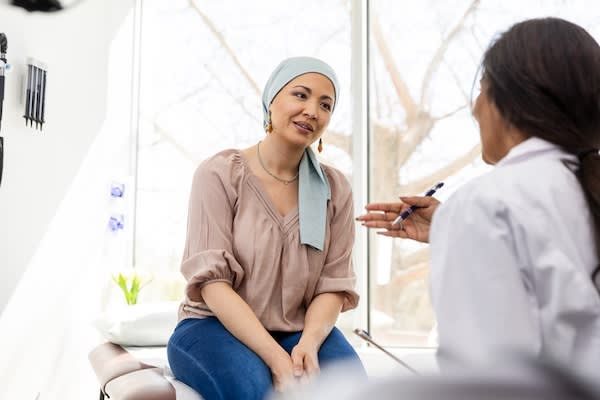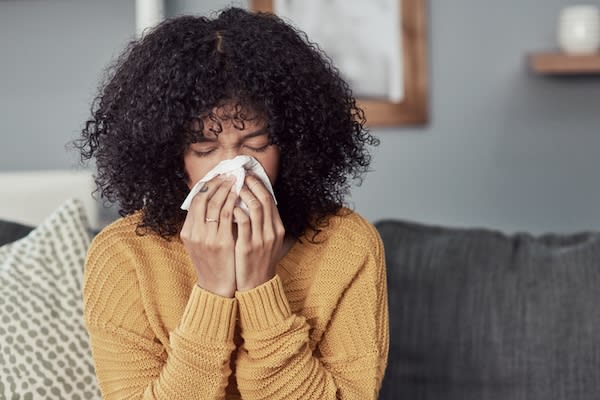The connection between dysautonomia and long COVID
[8 MIN READ]
In this article:
-
Long COVID refers to a wide variety of lingering or new symptoms and conditions that people experience after having a COVID-19 infection.
-
Studies have shown a link between COVID-19 infection and dysautonomia. Dysautonomia refers to disorders of the autonomic nervous system, which controls heart rate, blood pressure, digestion and temperature regulation.
-
A variety of treatments exist to address symptoms of long COVID dysautonomia, and many people recover. Ongoing research and clinical trials will improve understanding of this condition.
Dysautonomia and its connection to long COVID
You may have heard of long COVID, which refers to symptoms or conditions that persist long after someone has been infected with the coronavirus. While researchers aren’t sure what causes long COVID, they’re working hard to find effective treatments.
As part of that research, healthcare professionals and researchers discovered a link between COVID-19 and autonomic nervous system disorders (dysautonomia). Learning more about how these two conditions are linked could help you make crucial changes to improve your everyday life.
What is dysautonomia?
Your autonomic nervous system (ANS) controls your heart rate, blood pressure, digestion and temperature regulation. The sympathetic branch of the ANS is known as the “fight or flight” response. It’s active when you’re under stress or need to react fast. The parasympathetic branch is the “rest and digest” system that lowers heart rate and stimulates digestion.
Typically, these two branches are in balance and fluctuate depending on what you’re doing. If one stops working correctly, you can experience dysautonomia. It’s also known as autonomic dysfunction.
Symptoms of dysautonomia can include:
- Inappropriate sinus tachycardia: Your heart beats too fast for no apparent reason, and you may experience dizziness and shortness of breath.
- Orthostatic hypotension: Your blood pressure drops significantly when you get up from lying down, causing issues like dizziness, confusion, fainting and blurred vision.
- Postural orthostatic tachycardia syndrome (POTS): You experience a fast heart rate, chest pain, dizziness and shortness of breath when you stand up after lying down. POTS can also cause brain fog, headaches and fatigue.
- Vasovagal syncope: You experience a sudden drop in blood pressure that leads to fainting.
What is long COVID?
According to the U.S. Centers for Disease Control and Prevention (CDC), long COVID refers to the lingering effects that COVID-19 patients have. People with long COVID experience a wide variety of symptoms and conditions that persist or develop after an acute COVID-19 infection.
“Patients with long COVID have been experiencing various symptoms for at least three months, with waxing and waning signs or flare-ups,” says Joey Gee, D.O., a neurologist at Providence’s Mission Heritage Mission Viejo.
The CDC has identified more than 200 symptoms associated with long COVID. Some people may have only a few, but others can have many. They can be mild or severe. Among the most common long COVID symptoms:
- Brain fog
- Changes to smell and/or taste
- Chest pain
- Cough
- Depression and anxiety
- Digestive problems, including diarrhea
- Dizziness or lightheadedness
- Fatigue
- Headache
- Joint pain
- Shortness of breath
Long COVID symptoms can stay the same, get worse or go away and come back again. Some people recover within a few months; others have symptoms for years.
How dysautonomia and long COVID are connected
Studies have shown a link between COVID-19 and dysautonomia. Estimates vary widely, but as many as three-fourths of people with long COVID can experience dysautonomia.
How COVID-19 causes dysautonomia
It’s unclear exactly how the COVID-19 virus causes dysautonomia. Some theories include:
- Antibodies may impair the normal function of the ANS.
- Chronic inflammation and low oxygen levels can trigger the sympathetic nervous system.
- COVID-19 may awaken other viruses that haven’t been cleared out of the body.
- Overreaction from the immune system can lead to an attack on the ANS.
- The virus can enter the brainstem and damage areas that regulate breathing and heart functions.
Symptoms of COVID-related dysautonomia
Like symptoms of long COVID, the effects of long COVID dysautonomia can vary. Orthostatic hypotension and POTS are the most common. These are known as orthostatic intolerance. Other persistent symptoms can include:
- Abnormal heart rate
- Anxiety or irritability
- Chronic pain
- Difficulty breathing
- Heart palpitations
- Low energy levels
- Nausea and vomiting
- Sleep disruptions
- Sweating or shivering
- Visual problems
Diagnosis and treatment options for dysautonomia and long COVID
If you’re experiencing common symptoms of long COVID and/or dysautonomia, see your doctor. They will talk about your health history and symptoms and do an exam. You may also have other tests, such as:
- Chest X-ray, which shows the condition of the heart and lungs
- COMPASS-31 questionnaire, which screens for dysautonomia
- Electrocardiogram (ECG), which assesses heartbeat irregularities
- Lab work to analyze blood and urine samples
- Stand test or tilt-table test, which measures your heart rate and blood pressure after changes in your body position
Treating long COVID dysautonomia
There are various ways to treat long COVID dysautonomia. “It’s important to recognize your symptoms and seek medical attention,” Dr. Gee says. “Proper diagnosis, education and understanding lead to the most appropriate treatment options. Individualized treatments can include physical training, hydration, salt intake or medications.”
Among the treatments for post COVID-19 dysautonomia:
- Compression garments: Support socks and abdominal binders stimulate circulation.
- Diet changes: Frequent, small meals and increasing salt and water intake help control symptoms.
- Medication: Prescription medications help manage blood pressure and heart rate.
- Physical therapy: Exercise can increase energy and strength.
- Reclined aerobic exercise: Swimming, rowing and recumbent biking boost energy.
- Relaxation techniques: Deep breathing, meditation and chair yoga promote relaxation.
- Sleep adjustments: Elevating your head while you sleep stimulates circulation.
As research continues, treatments and interventions will evolve.
Research studies
Many clinical trials and research studies are underway for long COVID, including at Providence.
Since 2021, the National Institutes of Health (NIH) has been conducting the Recover Initiative. It aims to understand, diagnose and treat long COVID. The trials include 90,000 people at 300 research sites throughout the U.S.
The CDC is studying who’s most likely to get long COVID, how vaccination can help prevent long COVID and which treatments can help.
Talk to your doctor if you’re interested in participating in clinical trials.
Living with dysautonomia and long COVID
Living will dysautonomia and long COVID can be frustrating, particularly if you can’t go to work or school or be part of activities you enjoy.
“People with dysautonomia and long COVID should know that they’re not alone,” Dr. Gee says. “There are research studies and many good resources that can help.”
These resources include:
- Dysautonomia International provides education, support groups, crisis hotlines and more for patients and families dealing with dysautonomia.
- Long COVID Alliance supports research and offers webinars, guides and more.
- Support groups help patients and caregivers. Ask your doctor for recommendations or check the CDC list of long COVID support groups.
- Rehabilitation programs can incorporate physical, speech and occupational therapies, along with behavioral health, medical nutrition and specialty areas like neurology, cardiology and others.
- The Dysautonomia Project offers patient education, videos, Facebook groups, financial assistance information and more.
Many people successfully treat their symptoms and recover from dysautonomia and long COVID. If you’re dealing with symptoms, talk with your doctor about your next steps and what you can do to regain your health.
Contributing caregiver
Joey Gee, D.O., is a neurologist at Mission Heritage Mission Viejo in Mission Viejo, California.
Find a doctor
If you are looking for a primary care provider, you can search for one who’s right for you in our provider directory.
Download the Providence app
It’s all in the app: easily stay connected with Providence and your health. With the Providence app, you can schedule appointments, have virtual visits from the comfort of your own home, get health recommendations personalized for you, access your health records and so much more. Learn more and download the app.
Related resources
Long COVID: What is it and how long will it last?
Understanding long COVID based on patient experiences
This information is not intended as a substitute for professional medical care. Always follow your health care professional’s instructions.





